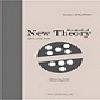New Correlation Coefficients between Linguistic Neutrosophic Numbers and Their Group Decision Making Method
Linguistic neutrosophic number, correlation coefficient, multiple criteria group decision making,
___
- F. Smarandache, Neutrosophy: Neutrosophic probability, set, and logic. American Research Press, Rehoboth, USA, 1998.
- Y. H. Guo, C. Zhou, H. P. Chan, A. Chughtai, J. Wei, L. M. Hadjiiski, E. A. Kazerooni, Automated iterative neutrosophic lung segmentation for image analysis in thoracic computed tomography. Medical Physics 40 (2013) 081912.
- Y. H. Guo, A. Sengur, J. W. Tian, A novel breast ultrasound image segmentation algorithm based on neutrosophic similarity score and level set. Computer Methods and Programs in Biomedicine 123 (2016) 43–53.
- K. M. Amin, A. I. Shahin, Y. H. Guo, A novel breast tumor classification algorithm using neutrosophic score features. Measurement 81 (2016) 210–220.
- J. Ye, Improved cosine similarity measures of simplified neutrosophic sets for medical diagnoses. Artificial Intelligence in Medicine 63(3) (2015) 171–179.
- J. Ye, J. Fu, Multi-period medical diagnosis method using a single valued neutrosophic similarity measure based on tangent function, Computer Methods and Programs in Biomedicine 123 (2016) 142-149.
- J. Fu, J. Ye, Simplified neutrosophic exponential similarity measures for the initial evaluation/diagnosis of benign prostatic hyperplasia symptom, Symmetry 9(8) (2017) 154.
- J. Ye, Fault diagnoses of steam turbine using the exponential similarity measure of neutrosophic numbers, Journal of Intelligent & Fuzzy Systems 30 (2016) 1927–1934.
- J. Ye, Single valued neutrosophic similarity measures based on cotangent function and their application in the fault diagnosis of steam turbine, Soft Computing 21(3) (2017) 817-825.
- J. Ye, Fault diagnoses of hydraulic turbine using the dimension root similarity measure of single-valued neutrosophic sets. Intelligent Automation & Soft Computing 24(1) (2018) 1-8.
- J. Ye, Multicriteria decision-making method using the correlation coefficient under single-valued neutrosophic environment. International Journal of General Systems 42 (2013) 386–394.
- J. Ye, Vector similarity measures of simplified neutrosophic sets and their application in multicriteria decision making, Journal of Intelligent & Fuzzy Systems 16 (2014) 204–211.
- P. D. Liu, Y. M. Wang, Multiple attribute decision making method based on single-valued neutrosophic normalized weighted Bonferroni mean, Neural Computing & Applications 25 (2014) 2001–2010.
- P. D. Liu, Y. C. Chu, Y. W. Li, Y. B. Chen, Some generalized neutrosophic number Hamacher aggregation operators and their application to group decision making, Journal of Intelligent & Fuzzy Systems 16 (2014) 242–255.
- A. W. Zhao, J. G. Du, H. J. Guan, Interval valued neutrosophic sets and multi-attribute decision-making based on generalized weighted aggregation operator, Journal of Intelligent & Fuzzy Systems 29 (2015) 2697–2706.
- H. X. Sun, H. X. Yang, J. Z. Wu, O. Y. Yao, Interval neutrosophic numbers Choquet integral operator for multi-criteria decision making, Journal of Intelligent & Fuzzy Systems 28 (2015) 2443–2455.
- J. J. Peng, J. Q. Wang, J. Wang, H. Y. Zhang, X. H. Chen, Simplified neutrosophic sets and their applications in multi-criteria group decision-making problems. International Journal of Systems Science 47 (2016) 2342–2358.
- P. D. Liu, Y. M. Wang, Interval neutrosophic prioritized OWA operator and its application to multiple attribute decision making. Journal of Systems Science and Complexity 29 (2016) 681–697.
- P. Biswas, S. Pramanik, B. C. Giri, TOPSIS method for multi-attribute group decision-making under single-valued neutrosophic environment. Neural Computing & Applications 27 (2016) 727–737.
- J. Ye, Simplified neutrosophic harmonic averaging projection-based method for multiple attribute decision making problems. International Journal of Machine Learning and Cybernetics 8 (2017) 981–987.
- A. Tu, J. Ye, B. Wang, Symmetry measures of simplified neutrosophic sets for multiple attribute decision-making problems. Symmetry 10 (2018) 144.
- W. H. Cui, J. Ye, Improved symmetry measures of simplified neutrosophic sets and their decision-making method based on a sine entropy weight model. Symmetry 10(6) (2018) 225.
- Y. X. Ma, J. Q. Wang, J. Wang, X. H. Wu, An interval neutrosophic linguistic multi-criteria group decision-making method and its application in selecting medical treatment options. Neural Computing & Applications 28(9) (2017) 2745–2765.
- J. Ye, An extended TOPSIS method for multiple attribute group decision making based on single valued neutrosophic linguistic numbers. Journal of Intelligent & Fuzzy Systems 28(1) (2015) 247–255.
- J. Ye, Some aggregation operators of interval neutrosophic linguistic numbers for multiple attribute decision making. Journal of Intelligent & Fuzzy Systems 27(5) (2014) 2231–2241.
- J. Ye, Hesitant interval neutrosophic linguistic set and its application in multiple attribute decision making. International Journal of Machine Learning and Cybernetics 10(4) (2017) 667-678.
- S. Broumi, F. Smarandache, Single valued neutrosophic trapezoid linguistic aggregation operators based multi-attribute decision making. Bull Pure Applied Sciences-Mathematics & Statistics 33(2) (2014) 135–155.
- S. Broumi, J. Ye, F. Smarandache, An extended TOPSIS method for multiple attribute decision making based on interval neutrosophic uncertain linguistic variables. Neutrosophic Sets and Systems 8 (2015) 23–32.
- Z. B. Fang, J. Ye, Multiple attribute group decision-making method based on linguistic neutrosophic numbers. Symmetry 9(7) (2017) 111.
- C. X. Fan, J. Ye, K. L. Hu, E. Fan, Bonferroni mean operators of linguistic neutrosophic numbers and their multiple attribute group decision-making methods. Information 8(3) (2017) 107.
- L. L. Shi, J. Ye, Cosine measures of linguistic neutrosophic numbers and their application in multiple attribute group decision-making. Information 8(4) (2017) 117.
- L. L. Shi, J. Ye, Multiple attribute group decision-making method using correlation coefficients between linguistic neutrosophic numbers, Journal of Intelligent & Fuzzy Systems 35(1) (2018) 917-925.
- P. D. Liu, X. L. You, Bidirectional projection measure of linguistic neutrosophic numbers and their application to multi-criteria group decision making, Computers & Industrial Engineering 128 (2019) 447-457.
- F. Smarandache, n-Valued refined neutrosophic logic and its applications in physics, Progress in Physics 4 (2013) 143-146.
- Yayın Aralığı: 4
- Başlangıç: 2014
- Yayıncı: Naim Çağman
Ali KURT, Mostafa ESLAMİ, Hadi REZAZADEH, Orkun TASBOZAN, Ozan ÖZKAN
Ahmed Ali AL-GONAH, Waleed Khadher MOHAMMED
Muhammad QİYAS, Saleem ABDULLAH, Shahzaib ASHRAF, Saifullah KHAN
Yanfei ZHU, Wenhua CUİ, Jun YE
Shahzaib ASHRAF, Saleem ABDULLAH, Muhammad QİYAS, Aziz KHAN
